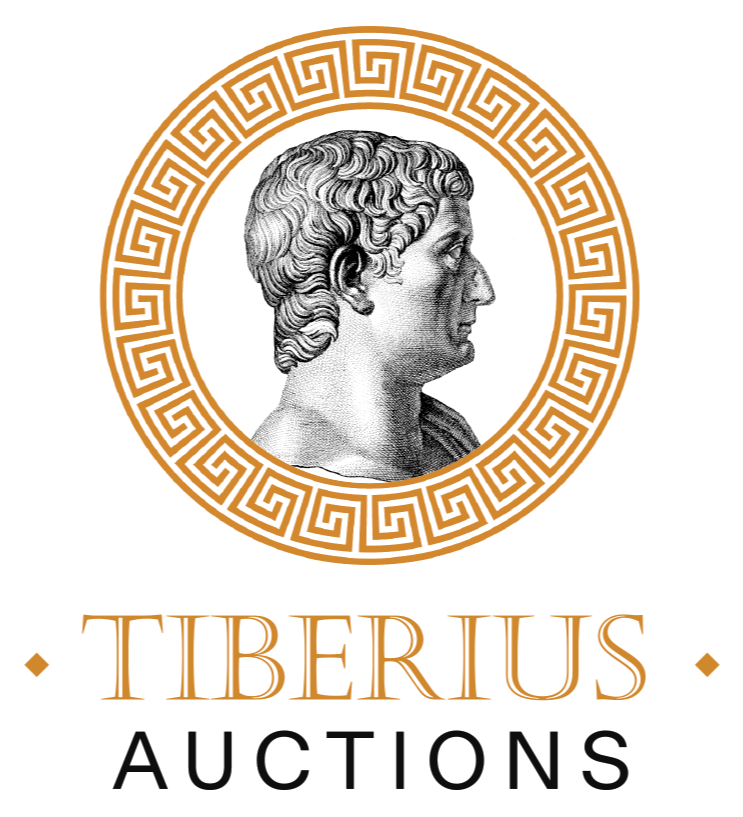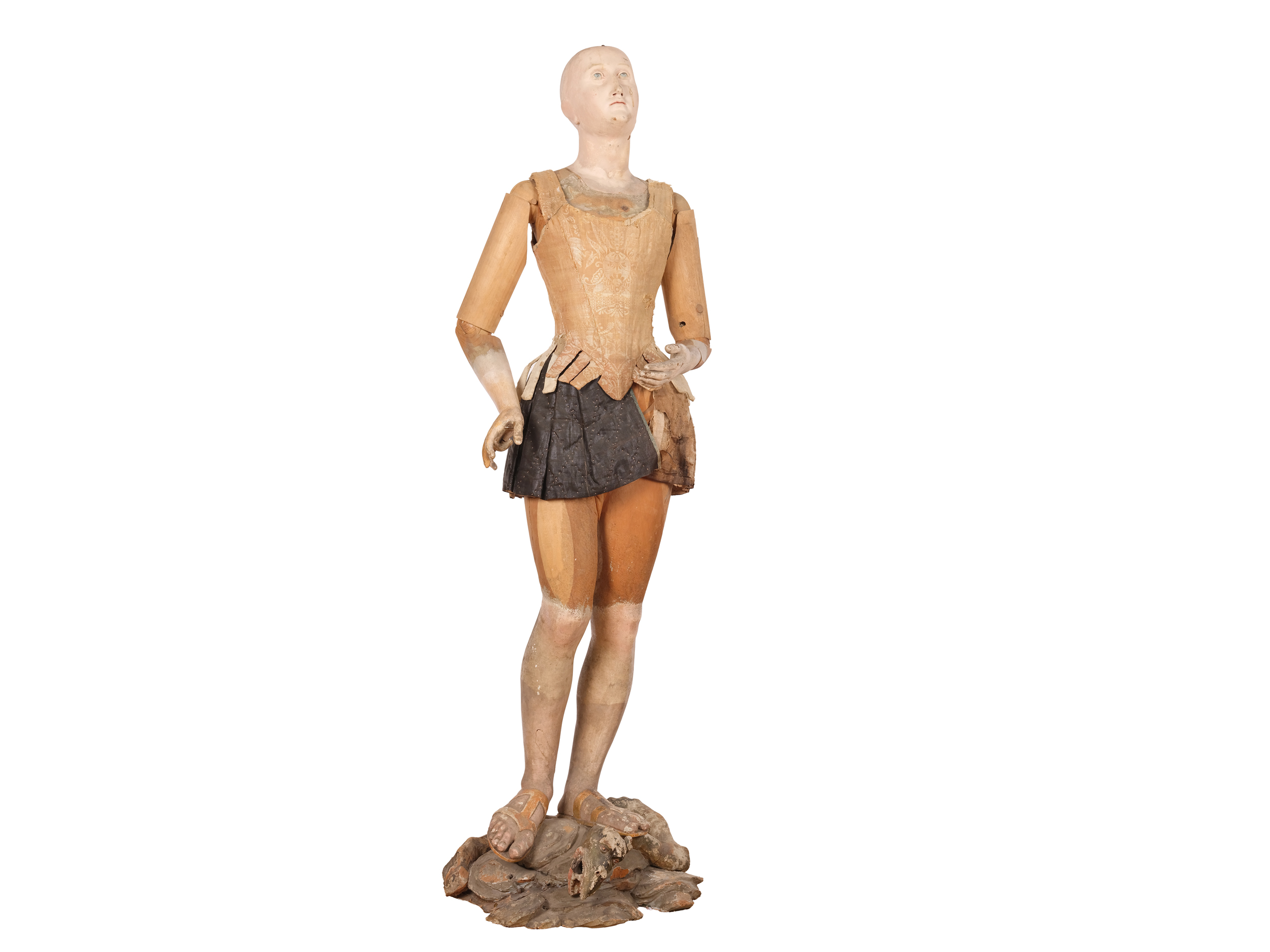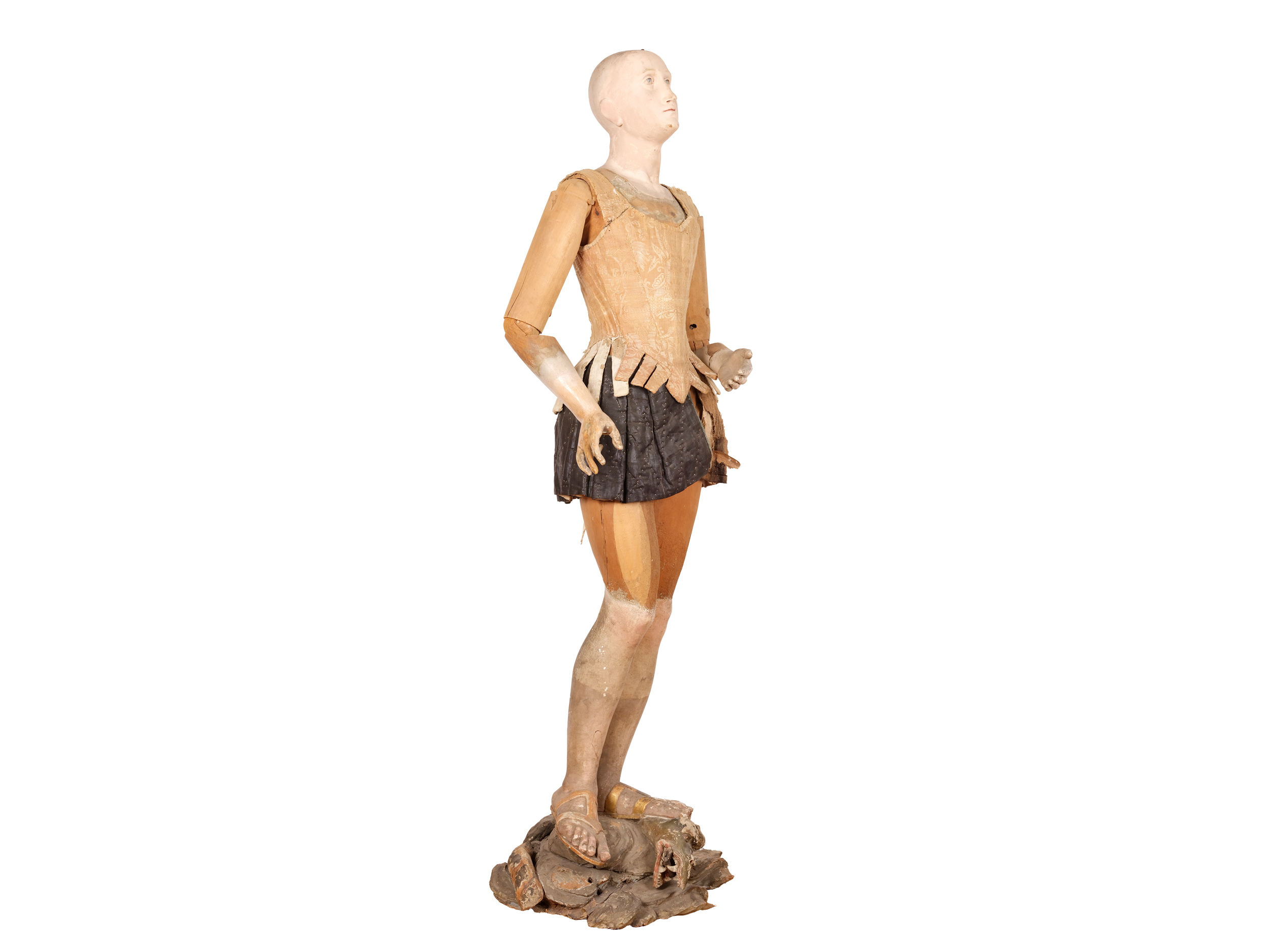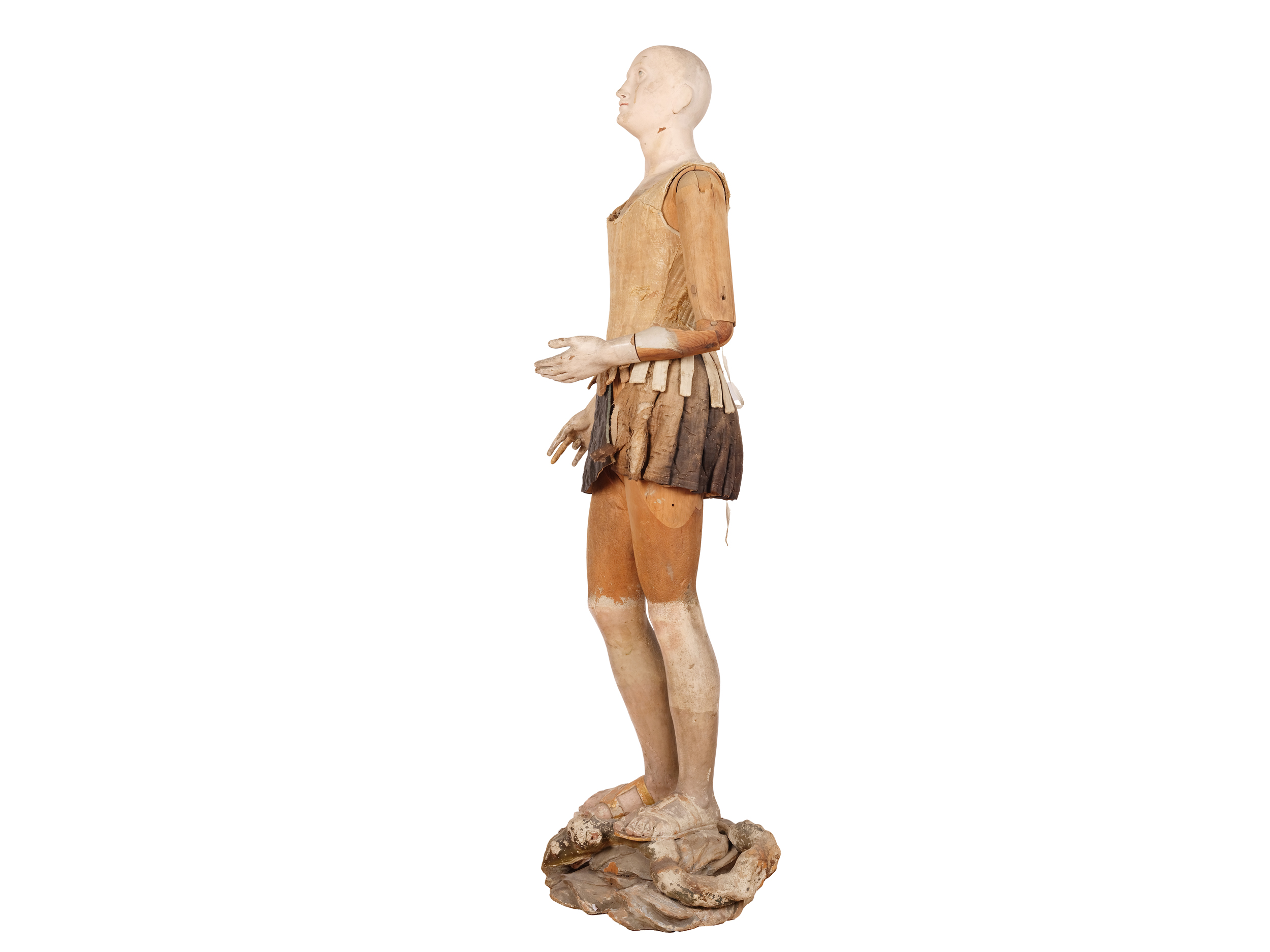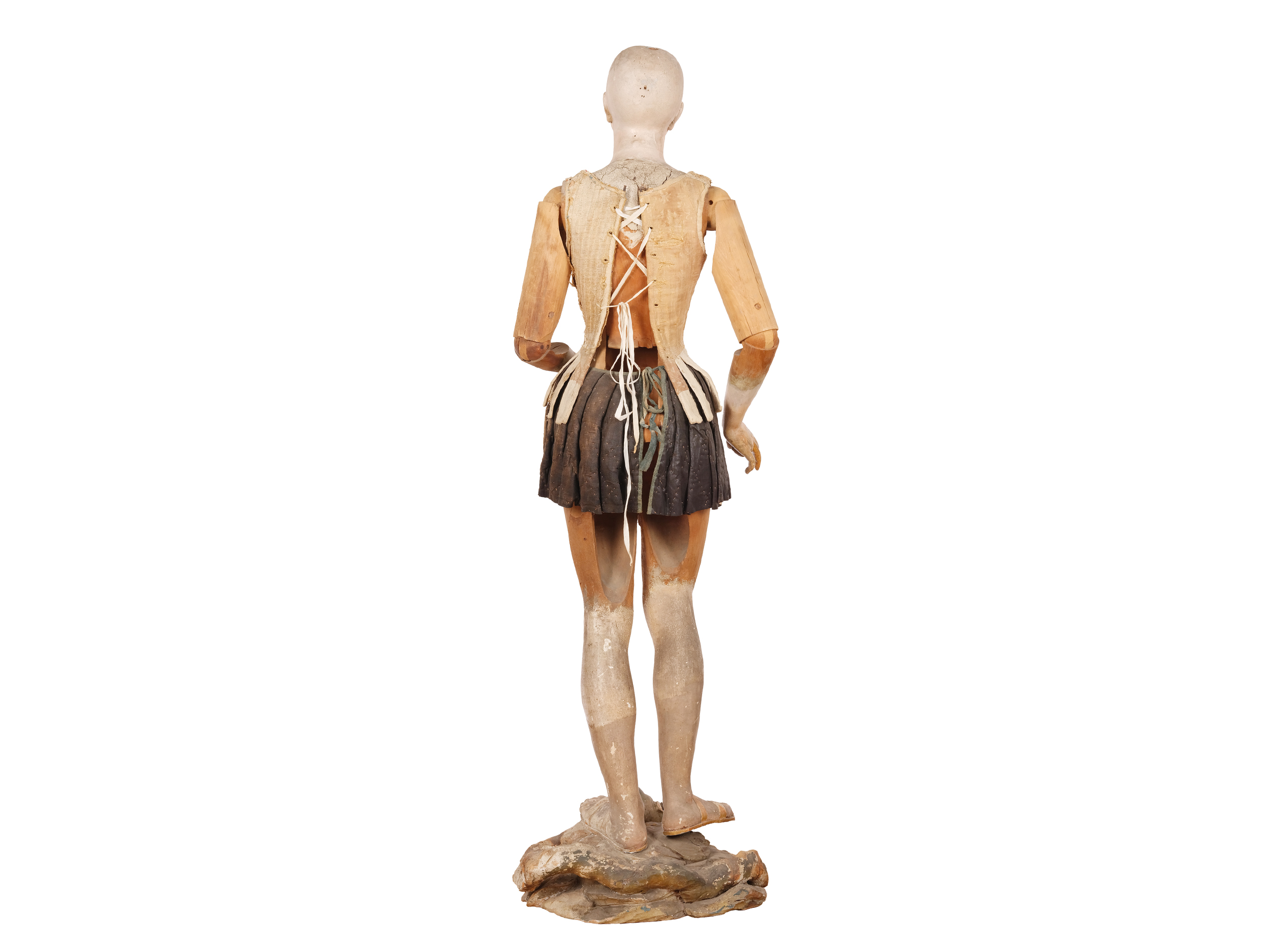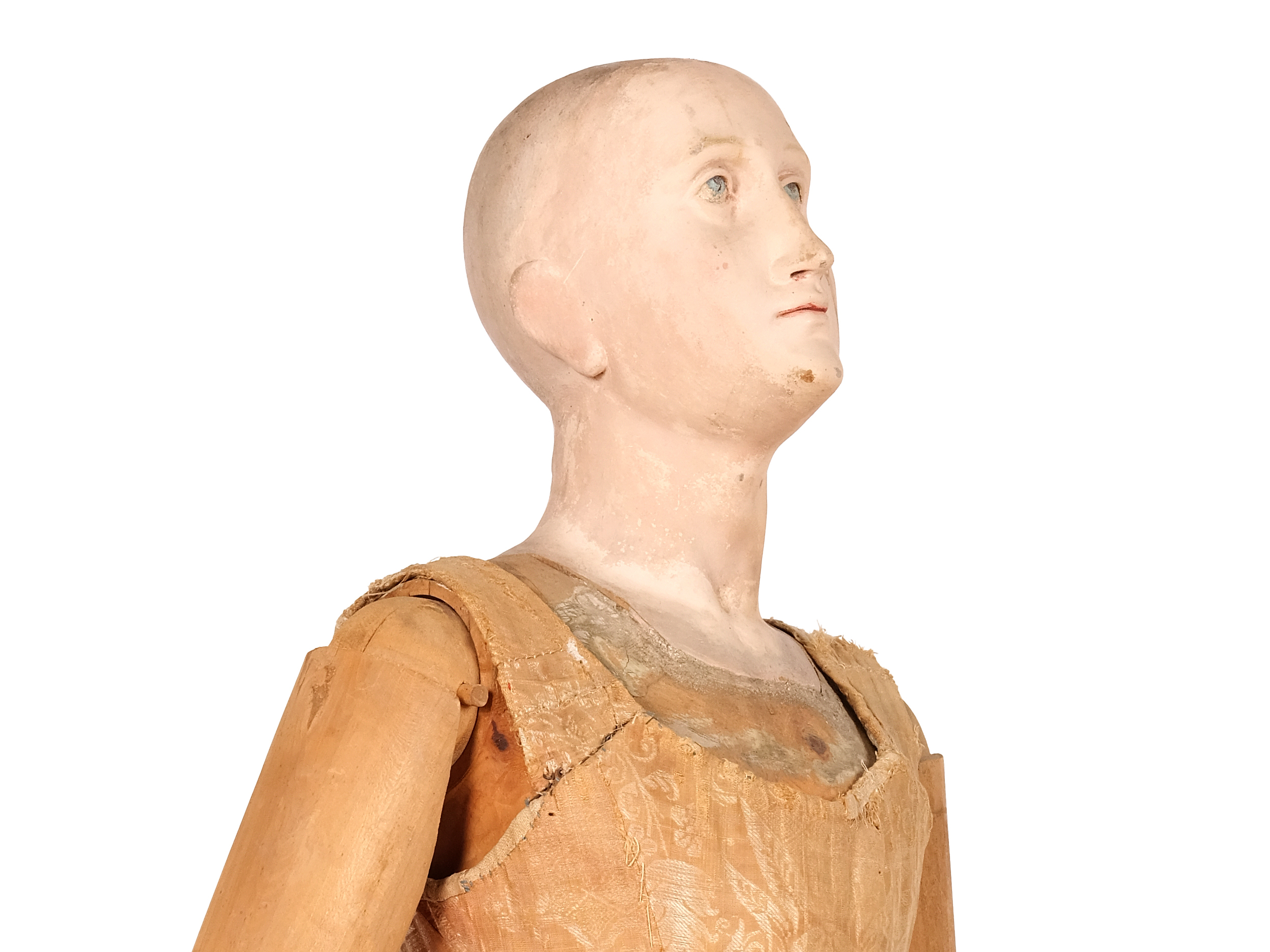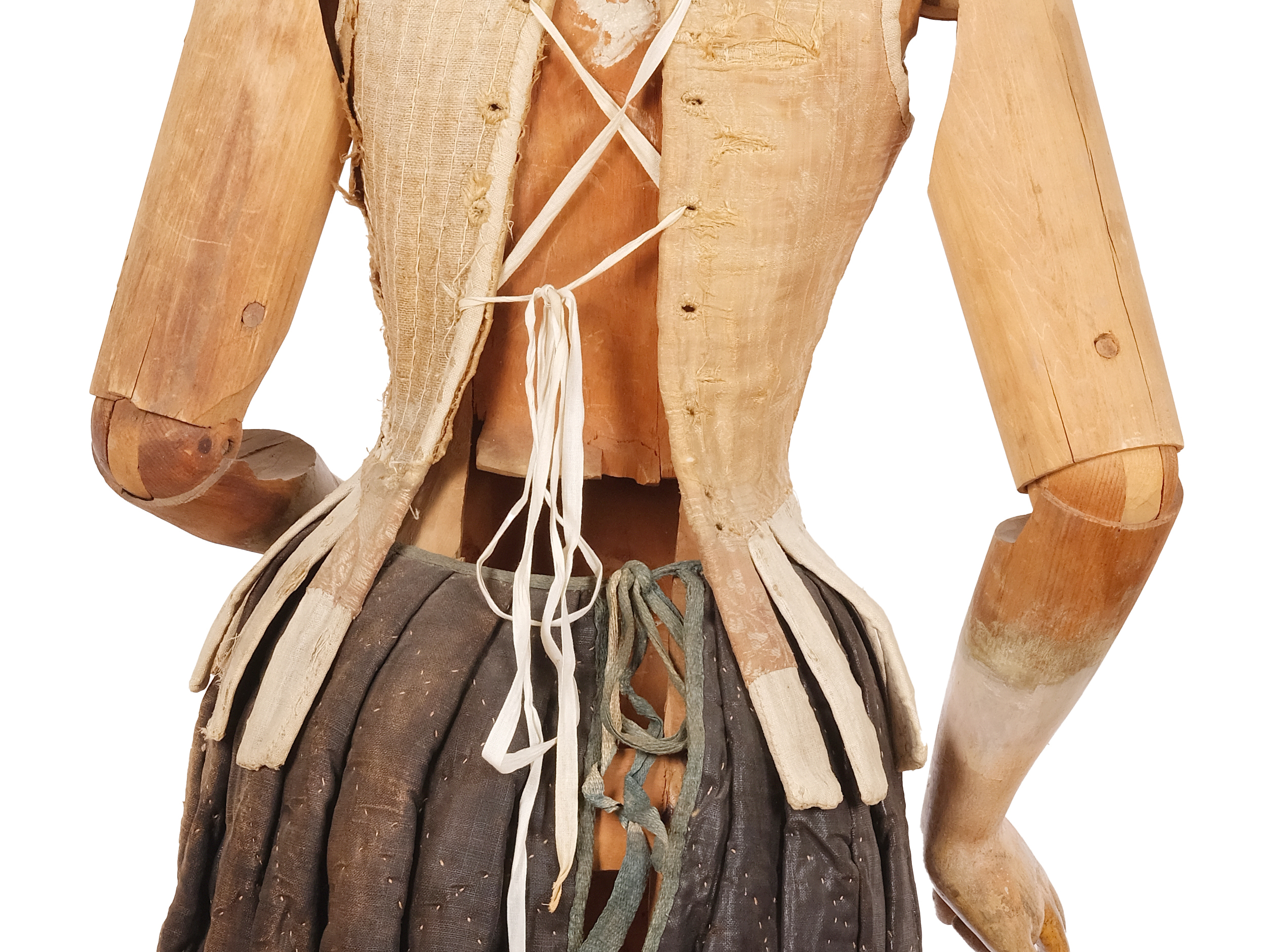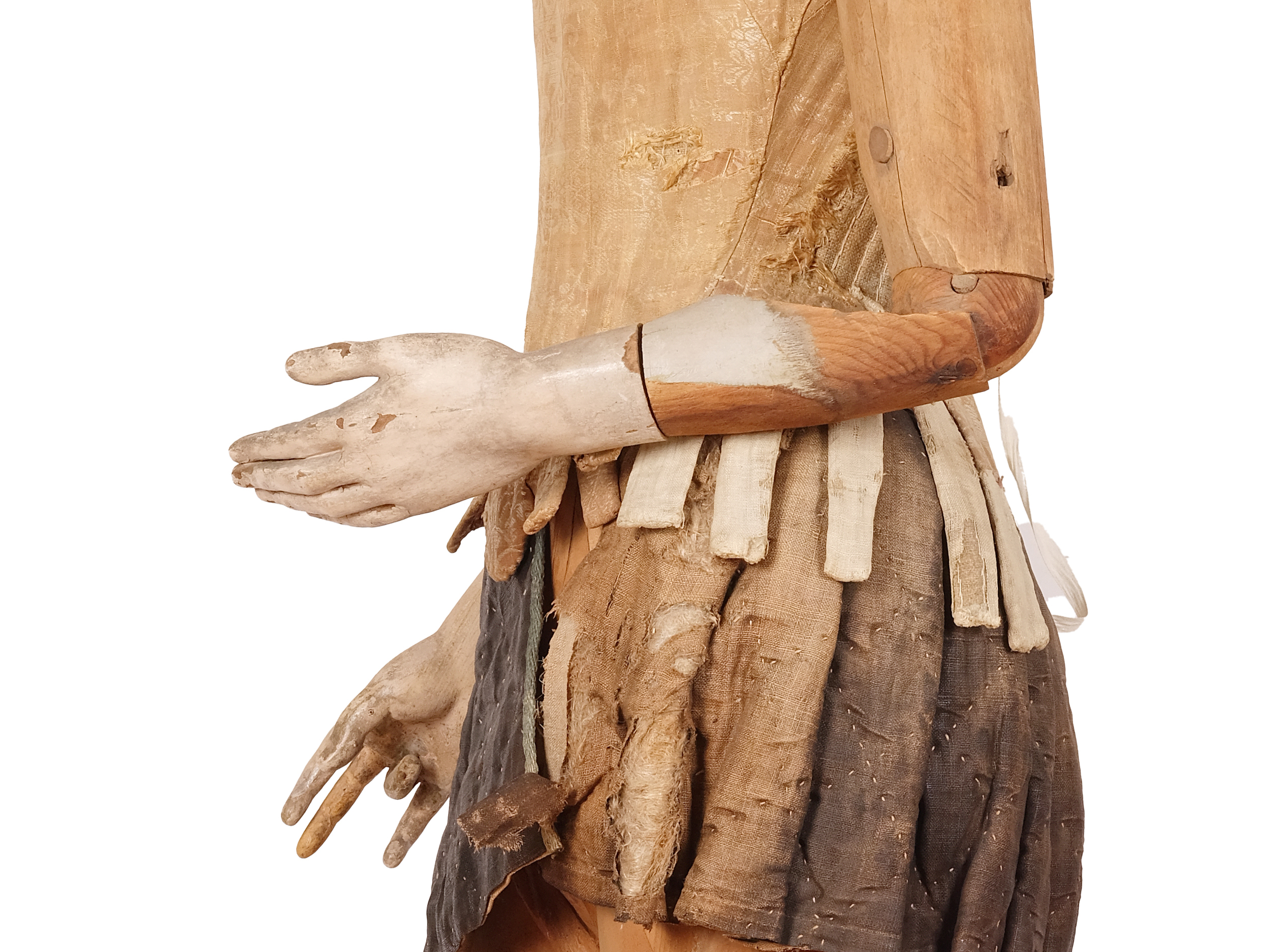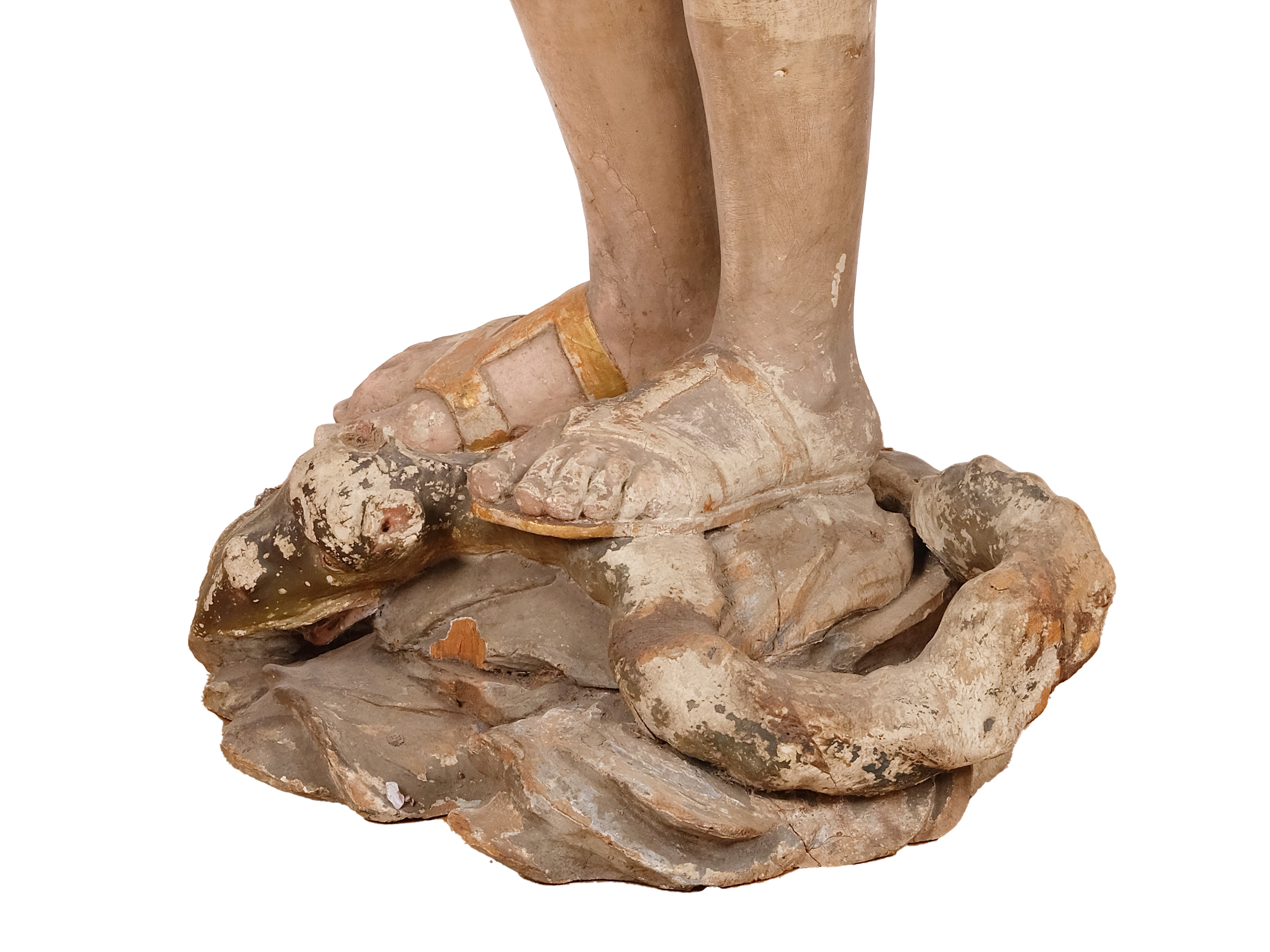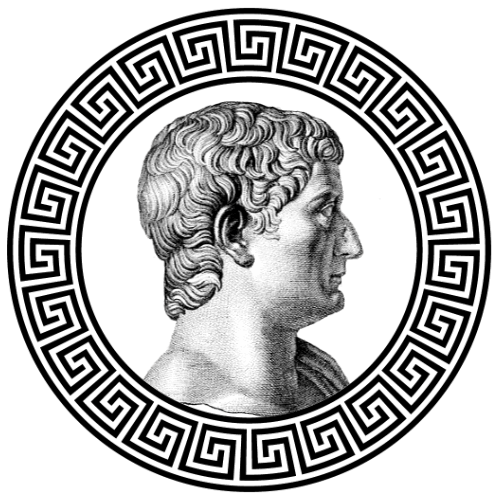Processional figure
TIBERIUS – NACHVERKAUF
Processional figure
Aftersale price:
€ 2.540
- USD: 2.992 $
- GBP: 2.207 £
Processional figure
With movable limbs
Southern Italy, Naples?
18th century
Carved wood
Original frame & underclothing
Height 153 cm
This expressive processional figure probably originates from the Neapolitan region of the 18th century, an era in which religious life was characterized by elaborately staged festivals, processions and cult images. The sculpture depicts the Immaculately Conceived Virgin Mary – Immaculata – one of the central images of the Virgin Mary in the Catholic Church, which was particularly revered in southern Italy.
The standing figure is carved from wood, the original frame and the simple undergarments have been preserved. Originally, it was elaborately dressed – with embroidered robes, perhaps a brocade or silk cloak, and probably also wore a wig. Such figures were deliberately designed to be simple so that they could be dressed differently for liturgical and festive purposes – a sign of their liveliness and connection to the everyday religious life of the faithful.
The figure stands on a stylized band of clouds and a snake – a classic iconographic motif of the Immaculata. The serpent symbolizes original sin and is overcome by Mary – as the new Eve. This pictorial motif refers to the dogma of the Immaculate Conception, which states that Mary was born free of original sin in order to be the worthy mother of Christ. The enraptured posture, the upward gaze and the slightly parted lips convey a moment of divine inspiration or mystical elevation.
The figure has movable arms – a typical feature of southern Italian processional figures. This construction made it possible to bring Mary to life during the procession, for example by handing her a sceptre, a rosary or a garland or by changing her hands depending on the liturgical occasion. Such figures were carried out of churches on high feast days, decorated, venerated and perceived as direct heavenly intercessors.
This sculpture combines masterful craftsmanship with deep religious meaning and is an impressive testimony to Baroque piety and southern Italian pictorial tradition.
